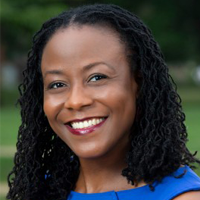
The Numbers Show Health Disparities Exist in a COVID-19 Era
In April 2020, the data started to emerge. The Centers for Disease Control (CDC) reported that the COVID-19 virus was having disproportionately negative effects on people of color when compared with their white counterparts. Disappointingly, early information was spotty. Several states did not collect ethnic or racial data on people who were tested or on those who tested positive for the virus. Since then, more detail has been provided, but the statistics continue to be alarming. According to the American Public Media Research Lab, as of August 2020, when adjusted for age, Black, Indigenous, Latinx, and other people of color have had higher infection and mortality rates relative to white people. In fact, these groups suffer death by COVID-19 at three times the rate experienced by whites.
This novel coronavirus has caused significant economic uncertainty, loss, and anxiety not only along ethnic and racial lines, but also for other social groups including women, people with disabilities, lower-income populations, and the under-insured. A May 2020 article in the Journal of the American Medical Association concluded that while the presence of health disparities has been a known social issue for years, this virus has further revealed the inequities. Even with their weekly and monthly reporting of the statistics, the powerful U.S. American media can do more to raise the profile of this injustice and inspire policy changes from politicians. The media must ensure that inequities in the healthcare context are always highlighted in any coronavirus-related topic that is being reported. This is important because COVID-19 experiences are not simply different, but unequal.
Media Representations of Health Disparities are Few
In 1991, the World Health Organization described health inequalities as health differences that were avoidable, unnecessary, and unfair. By 2010, the U.S. organization, Healthy People 2020, defined a health disparity as:
“a particular type of health difference that is closely linked with social, economic, and/or environmental disadvantage. Health disparities adversely affect groups of people who have systematically experienced greater obstacles to health based on their racial or ethnic group; religion; socioeconomic status; gender; age; mental health; cognitive, sensory, or physical disability; sexual orientation or gender identity; geographic location; or other characteristics historically linked to discrimination or exclusion.”
Later, Center on Social Disparities in Health researcher Paula Braveman argued that health inequities are simply the flouting of basic human rights.
Historically, there has been little reporting of these topics. This is surprising, given the large amount of research focused on disease risk factors, such as the environment, and documented differences in rates of mortality, ability to obtain treatment, behavior change strategies, and health outcomes based on economic and social disadvantages. Several studies on the representation of minority health disparities reported on in newspapers from 1994 – 2005 revealed that these news stories constituted a small proportion of the overall coverage. Even when health disparities were reported, the focus was on blaming the patient (e.g., noncompliance with treatment recommendations and delayed health-seeking), rather than on systemic issues, such as racism, discrimination, or the dearth of healthcare resources.
So, why is there insufficient reporting of health disparities in general? In a qualitative study published in the Journal of Community Health, reporters shared the challenges in covering health disparities in the local media:
- Health disparities do not affect the entire population.
- Health reporters prefer stories that provide health information or inspire behavior change.
- These kinds of stories deflect from medical information that needs to be disseminated.
- There is a lack of time to research health disparities.
- There are restrictions on the length of story.
- The topic of health disparities is too complex, involving too much intersectionality.
- Audiences do not believe disparities are real.
- Audiences find that kind of information less agreeable and so they avoid or ignore it.
- Audiences are declining.
- There is a lack of trust in the news media.
Also, reporting statistical information generated by government agencies is much easier than finding diverse individual or community-specific stories on the effects of health disparities. However, if we are being brutally honest, health disparities mostly impact people who are already marginalized by society and who may not be regarded as people of value. This may be the unfortunate cause of their rare or brief presence in the news media.
[If] we are being brutally honest, health disparities mostly impact people who are already marginalized by society and who may not be regarded as people of value.
Media Coverage of Health Disparities is Critical in a COVID-19 Era
The media is a structure of power that influences how we see our world, how we live within our world, and how we interact with others who are culturally different from us. In Intercultural Communication: A Critical Perspective, Rona Tamiko Halualani reminds us that the media significantly influences intercultural relations by curating how images, stories, and content about various cultural groups are presented to the larger society.
 Importantly, the media daily report the number of new cases, people tested, and deaths attributable to COVID-19. However, the news far less frequently reports on the socioeconomic background, ethnicity/race, disability, and sex associated with those cases, tests, and deaths. This type of reporting limits perspectives on the effects of COVID-19 and maintains an individualistic outlook on the virus. Without more personalized stories from various sectors of the population, media audiences will remain emotionally distant and unempathetic toward cultural groups who bear the brunt of and the allostatic load brought on by COVID-19. As a result, we get responses such as, “It is what it is” from the president of the United States.
Importantly, the media daily report the number of new cases, people tested, and deaths attributable to COVID-19. However, the news far less frequently reports on the socioeconomic background, ethnicity/race, disability, and sex associated with those cases, tests, and deaths. This type of reporting limits perspectives on the effects of COVID-19 and maintains an individualistic outlook on the virus. Without more personalized stories from various sectors of the population, media audiences will remain emotionally distant and unempathetic toward cultural groups who bear the brunt of and the allostatic load brought on by COVID-19. As a result, we get responses such as, “It is what it is” from the president of the United States.
Instead of focusing on the unequal nature of this virus, more palatable, “feel-good” stories are highlighted, such as communities celebrating frontline workers. We have seen the clapping and banging of pots and pans during the shift-changes at hospitals in New York. These moving stories evoke warm emotions as we marvel at and laud the sacrificial workers. There have been profile stories of COVID-19 long-hauler patients finally walking out of hospitals after months of treatment. These workers and survivors are elevated to the status of super-heroes for fighting off and conquering the new, invisible enemy. But what about the other side of the stories?
Notably, there are journalists who are going against the tide and reporting the fatal side effects of being a frontline worker or hero during COVID times. The Guardian and Kaiser Health News have collaborated to create an interactive database that highlights individual stories of the already more than 1,000 (and rising) U.S. healthcare workers whose deaths were caused by COVID-19 and its complications. Unsurprisingly, these reporters’ investigations revealed that most of the fatalities were people of color, and mainly women.
While the stories of the long-haulers are heralded, often these accounts end at the hospital door or when patients arrive at their doorstep with neighbors and family members celebrating their return. More follow-up stories, particularly those about patients from marginalized groups, are needed to document the circumstances that lead to their hospitalization.
The stories need to acknowledge the realities in which some of these patients live. We need to air the dirty laundry and acknowledge that there are COVID victims who experience differences in access to care, live in less-than-satisfactory living conditions that are the products of systemic racism, and must maintain low-income jobs that involve high exposure to the virus. These victims cannot work remotely (think transport, grocery store, and fast-food workers). Also, they lack reliable internet access, which prevents their children from attending schools remotely and avoiding the possibility of bringing the virus back home and passing it on to members of multi-generational families.
Consider the case of the two Hispanic girls sitting outside a Salinas, California Taco Bell in September so that they could use the chain’s WiFi and attend school remotely. Their story highlighted the plight of undocumented immigrants and technology inequalities that force families into a head-on collision with the virus. While these girls’ heart-wrenching educational challenge made national news, this was a story that was instigated by a passer-by and not the media. One story is not sufficient to show how educational and technological disparities intersect with health disparities.
COVID-19 is a modern-day form of segregation that creates and maintains racialized spaces and responses.
The media must not ignore health disparities but embrace its ability to raise the alarm that while all people in the United States are susceptible to this virus, the effects are discriminatory. More Latinx and Black residents know someone affected by the virus in comparison to white residents. More explicitly, the media can reveal that COVID-19 is a modern-day form of segregation that creates and maintains racialized spaces and responses.
Celebrities and infectious disease doctors smilingly, yet sternly tout the importance of washing one’s hands. But what if there is no running water on the tribal land on which you reside? What if your only access to clean water is expensive bottled water, because your natural water supply has dangerous levels of lead in it? Being outdoors is better, the experts say. But what if you cannot walk outside due to a chronic disease that was caused and exacerbated by less access to healthy food because you live in a food desert? Also, there is no wonderful green space for socially distanced outdoor activity. You live in a polluted, densely populated, low-income residential area, characterized by institutionalized poverty. Government officials mandate shelter-in-place policies and push this time as an opportunity to strengthen family ties. But what if your shelter-in-place means domestic abuse-in-place? This virus is not the great equalizer, CNN has warned. Race, socioeconomic background, gender, and geography affect who lives, dies, or receives treatment. We are not all in this together.
Tell More Stories About Health Disparities
What is the way forward? First, journalists need to redefine how they approach stories about health disparities. While reporters recommend that health experts give a ready slate of sources for stories, this has limitations. A qualitative study by Wallington, Blake, Taylor-Clarke, and Viswanath recommended that journalists should understand that there are societal definitions and hierarchies for sources that may not include the people who are most affected or those who are natives of the cultural groups being highlighted.
Reporters need to reexamine, challenge, or circumvent those hierarchies that may silence voices. This may require journalists to learn how to build trust within communities so that people feel comfortable when writers approach them for their stories. Journalists will be rewarded with stories that are, yes, heartbreaking, but also that are empathetic, valuable, and palatable.
Reporters need to reexamine, challenge, or circumvent those hierarchies that may silence voices.
Second, the media must embrace its ability to help change policy regarding health disparities. One way to do so is by amplifying the voices of advocacy groups. Since the emergence of COVID-19, several groups have been appealing for federal interventions that are specifically tailored to ethnic and racial health disparities.
For example, the National Association for the Advancement of Colored People (NAACP) has been requesting more federal funding for qualified health centers that serve minority communities. The Lawyers’ Committee for Civil Rights Under Law has requested a more regulated reporting system of COVID-19 numbers that accurately shows the ethnic and socioeconomic representations of those who have been affected according to state and community. With clean water being a key component in the federal government’s guidelines in the fight against COVID-19, the National Congress for American Indians has been requesting more funding to assist in addressing the water and sanitation infrastructure on Indian reservations.
Third, journalists can frame a story about health disparities as a social problem that has the strong potential to affect the entire population in the long term, even while affecting only a few now.
The preservation of life, liberty, and the pursuit of happiness becomes difficult when people do not have quick and easy access to specialist doctors, sufficient health insurance, affordable medication and wellness options, or treatment opportunities. When these exist, they are experiencing a health inequity and are not able to embody the nation’s core cultural ideals. The “pull-yourself-up by your own bootstraps” value that is characteristic of the U.S. culture will not work against a virus that is increasing the wealth gap and obliterating jobs, housing accommodations, and access to health insurance. Instead, a more collectivist, “I am You” perspective is needed.
The media can illustrate the far-reaching effects of the virus. According to the U.S. Bureau of Labor Statistics, women are experiencing greater job loss than their male counterparts. Because of shutdowns in the service industries, many women, who account for over 60 percent of the workforce, lost their jobs. The United Nations (UN) warned that with funds being redirected to controlling the outbreak, there is less funding for domestic violence abuse care, or for sexual and reproductive health services. Furthermore, because of increasing childcare responsibilities, women are experiencing time-poverty, that is, less time for rest and leisure.
The UN also pointed out that people with disabilities experience unique psychological stressors. During the pandemic, many, such as children with special needs, have lost access to or frequent access to caregivers and facilities they previously enjoyed. Transportation cuts, such as those to the Amtrak North-South train routes, affect the low-income people and African Americans who mostly rely on these means to get to work.
The preservation of health disparities leaves vulnerable populations out of important policy decisions. For example, trials for vaccines for SARS-CoV-2 have very few minority volunteers. This is understandable, as these groups mistrust medical institutions because of their history of systemic racism. When minorities have a harder time accessing pain medication from hospitals and emergency rooms and when there are false beliefs about biological differences between Blacks and whites, minority people’s reluctance to participate is even more understandable. The more such inequities are experienced, the more difficult it will be for scientists to accurately predict the vaccination’s effect across ethnic groups. To bridge the cultural divide, the media can tell impactful stories about these various social topics and the wide-ranging effects of health disparities.
As we continue to monitor the coverage of COVID-19, we must not suspend our critical judgment of the media and implicitly presume their objectivity. Instead, we must recognize that gatekeepers operate this cultural power structure. They make vested decisions about how to represent and disseminate stories and images of cultural groups. The way in which messages about health disparities are framed can promote support, change, or indifference. We must hold the media accountable and encourage the telling of more stories about health disparities.
ABOUT THE AUTHOR

KALLIA O. WRIGHT is an Associate Professor in the Department of Communication and Rhetorical Studies at Illinois College. Wright has taught a variety of courses, including intercultural communication and health communication and has been involved in several experiential-learning initiatives that focus on intercultural interactions. She has also received awards for teaching excellence. Wright is a qualitative researcher who examines narratives about chronic illness experiences and the impact of culture on those experiences. She has published work in Health Communication and Communication Teacher, communication encyclopedias, and chapters of edited books.

